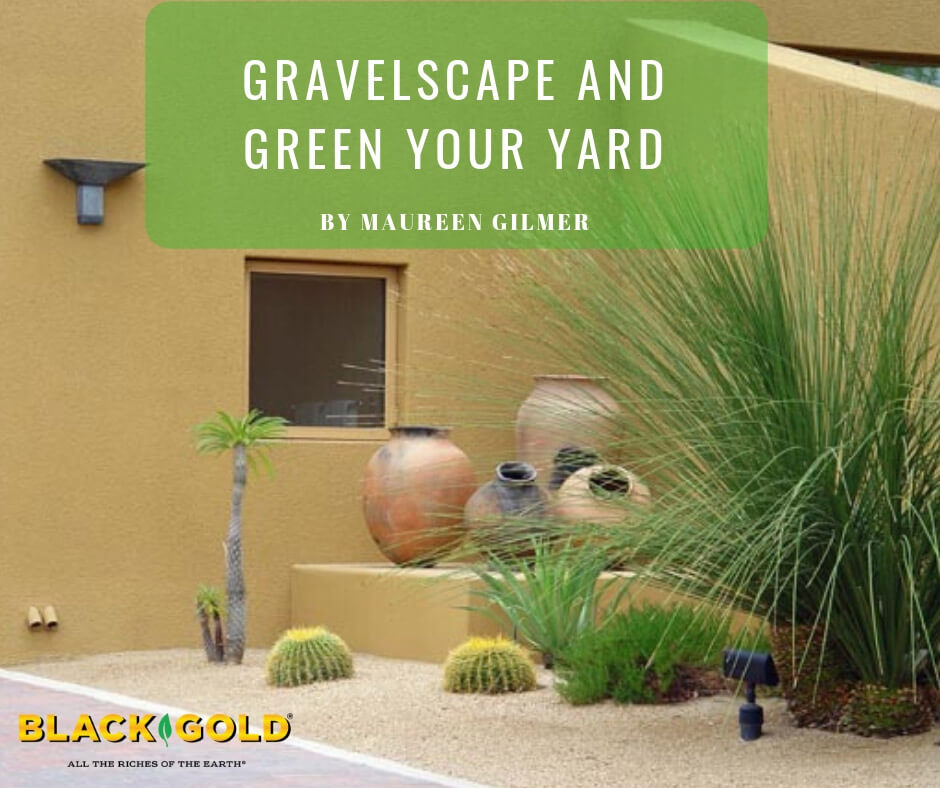
Nowhere are water-needy lawns disappearing as fast as in arid southern California and the American Southwest. This is the proving ground for a lot of alternatives to traditional turfgrass. A big problem is always the front yard, where your property value is rooted in curb appeal. What you do there will have a big impact on the future marketability of your home. This is why unconventional front yard solutions, no matter how sustainable, may cost far more than you realize, but desirable low-cost options do exist.
Gravelscaping
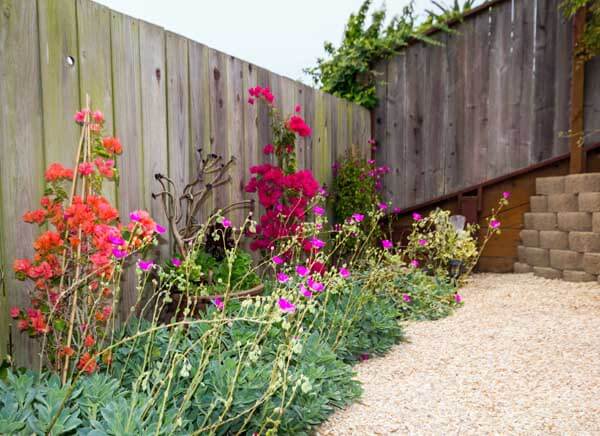
The most versatile and affordable replacement material for lawns out west is gravel, due to lower cost, availability and color range. Spreading gravel takes muscle, but it’s an easier DIY project than precision placement of precast concrete units. Gravel can be raked and walked on, leaving a beautiful blank canvas to envision your dryland planting ideas.
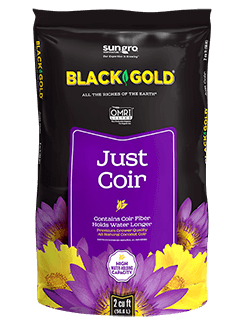 All manner of bold cacti and succulents look great against a gravel base. You can even color coordinate your gravel colors and textures with regionally appropriate plantings for a sharp, clean, low-water landscape your neighbors will appreciate. Just be sure to consider plantings as you plant your gravel lawn, so you can establish them as you lay your gravelscape. Increasing soil fertility, with enrichments such as Black Gold Cactus Mix and Just Coir, will give your low-water plants a head start.
All manner of bold cacti and succulents look great against a gravel base. You can even color coordinate your gravel colors and textures with regionally appropriate plantings for a sharp, clean, low-water landscape your neighbors will appreciate. Just be sure to consider plantings as you plant your gravel lawn, so you can establish them as you lay your gravelscape. Increasing soil fertility, with enrichments such as Black Gold Cactus Mix and Just Coir, will give your low-water plants a head start.
Replacing Lawn with Gravel
Here are eight rules we have learned in the desert to guide your lawn replacement with gravel:
- Use proper edging. Where your gravel ends, problems begin. Use a solid edge boarder (metal, wood, plastic) that is at least 1 to 2 inches above grade to ensure no spill over onto adjacent beds or paving.
- Lay dividers between gravel colors. It’s fun to use more than one color to create just the right look, but if you don’t divide them well, they eventually merge together resulting in a visually muddy colored mess. Make plans for a substantial divider within that great crisp edge you created.
- Insist on professional-grade weed barrier. Landscape suppliers provide thick, heavy-grade weed barrier fabric that is easy to install and long lasting, though a bit more expensive than consumer grade. It stays put, won’t tear and most importantly, resists decomposition far longer.
- Be sure all the lawn is dead. Failure to kill all of the grass and weeds that once grew in your lawn can doom your gravel to future infestation. Even with weed barrier fabric, Bermuda grass can travel many feet underneath to find light and water, if not properly eradicated before-hand.
- Choose the right gravel from the start. Though weed barrier helps keep gravel from your soil, some gravel will always make its way in. If you bring in gravel that’s in high contrast with your soil color, it’s there to stay. In the future, some of it will mixed in to forever speckle that ground.
- Avoid dark gravel in hot climates. Dark gravel colors absorb heat quickly, then radiates it back into adjacent spaces after sunset. Conversely, white gravel is coolest but causes glare. Neutrals are ideal.
- Grade and ensure adequate thickness. Gravel should be laid from 2 to 2.5 inches thick on a uniform surface. When adding gravel to critical junctures with paving, the ground must be dug out so all grades are even. Too often the gravel layer is thinned to meet the patio surface grade, which always results in bald spots at these high traffic areas.
- Pedestrians first. Round river gravel is great to walk on, but it rolls easily, so it cannot be used on an incline. Crushed gravel has sharp edges and points that dig into moist earth for anchorage but is not easy on the feet. Always consider gravel texture on walkways in your design, especially with respect to senior citizens and small children.
Everyone can have a beautiful gravel front garden the neighborhood will love. Make it broad and beautiful, in any style, so your property values are maintained while conserving water.
Gravel Style Guide

Different gravel textures and colors yield different looks and offer different functionalities. Here are some of the most common design styles using gravel:
Earthy: Fine, sand-colored gravel can be swept to visual perfection to make architectural plants stand out like sculpture.
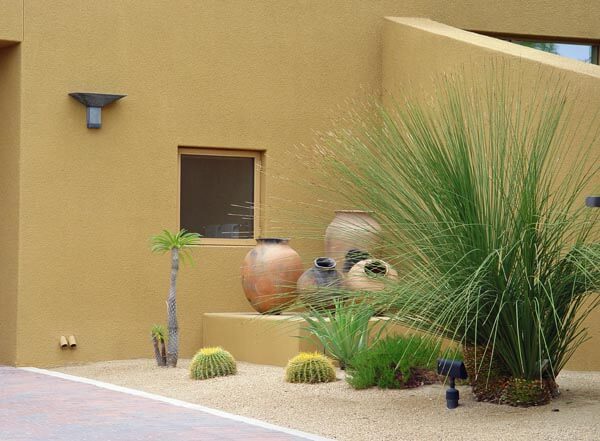
Modern: Warm-colored, 2-inch gravel is easy to clean and rake around and sets the stage for bold planting options for mid-century modern homes.
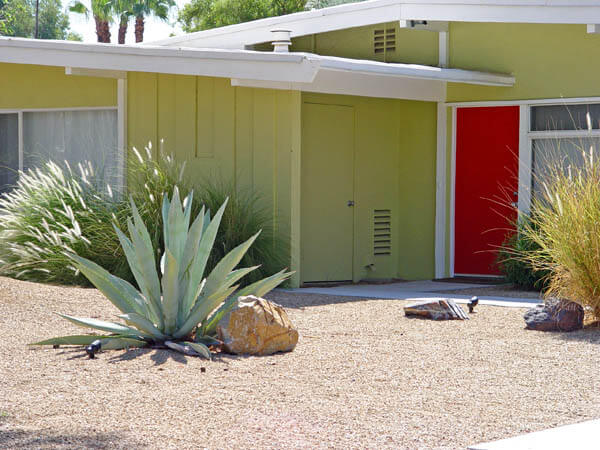
Parterre: Replace a sweeping front lawn with gravel and creative flowing paths and beds lined with edging pavers.

Urban: Postage stamp urban yard becomes a sleek modern space with just gravel, a few trees and grasses.

Transitions: This fresh edge between green and rosy gravel (below) is not sustainable without a strongly defined divider to keep it crisp; rose gravel already too thin at top of concrete slab where grade is much too high.


